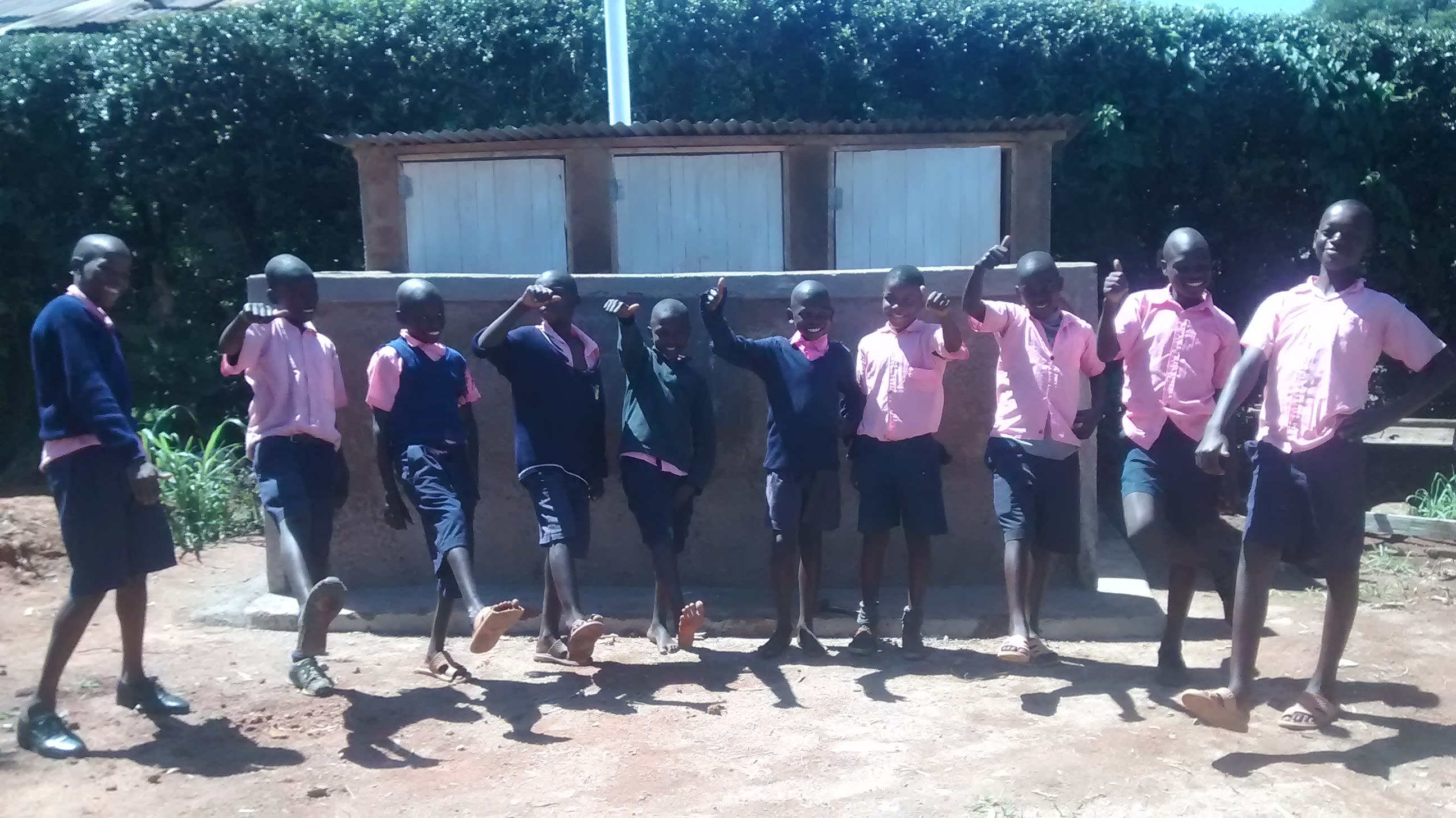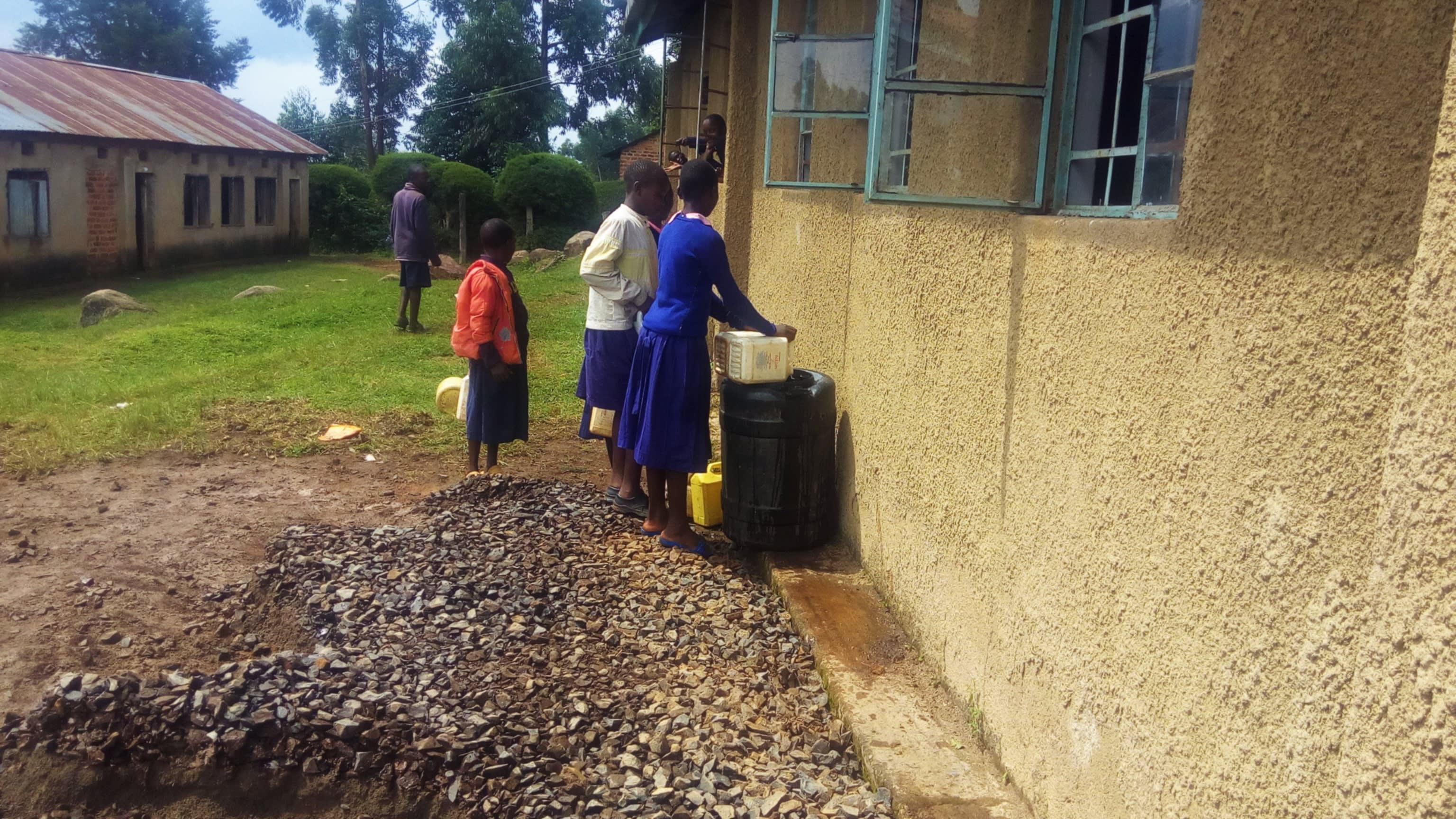This project is a part of our shared program with Western Water And Sanitation Forum (WEWASAFO). It was originally slated to be done at Esumeyia Primary School in 2017, but administration realized that they didn't have the capacity or time to host a project this year. They asked to be reconsidered in 2018.
Musudzu Primary School came forward and showed their willingness to hold a project at their school and support the artisan in building a rainwater catchment tank.
Our team is pleased to directly share the below report (edited for clarity, as needed).
Welcome to the School
Musudzu Primary School was started in 1958 by Salvation Army Church. The school is located in Musudzu Village of Vihiga County. The school hosts 360 pupils; 169 boys and 157 girls in primary level with 14 boys and 20 girls in early education. It employs 12 teachers and two support staff.
A normal day at Musudzu Primary School begins at 6 am when pupils start arriving. Lower classes must be there to start cleaning from 7 am to 7:25 am Monday thru Friday. The master on duty addresses the pupils and invites other teachers to make announcements. Normal lessons begin at 8 am and end at 4:30 pm. Some of the classrooms here are in very poor condition; there are a number of classrooms that have no doors or windows.
Most families living directly around the school are farmers who grows cash crops like sugarcane. After they have seen their children off to school, women continue with domestic chores at home while the men seek income by doing odd jobs (taxiing, breaking stones, working on farms).
Water Situation
The school only has one plastic tank with a capacity of 6,000 liters which does not store enough water for the drinking, cooking, and cleaning that needs to happen on a daily basis. Since this tank is so small, the administration has forced students to carry their own containers of water for the day's drinking. And since students come from many different places, there's no way to ensure their drinking water is clean throughout the school day.
Students are already tried from carrying both their books and a full container of dirty water every morning. Beyond this, there is waterborne disease to contend with - to avoid a heavy burden the entire trip to school, students prefer to fill their required containers with the dirty water pooled closest to the school.
Sanitation Situation
When it comes to sanitation facilities, boys have two pit latrines while girls have only one - which is already three-quarters full. There are other latrines that can be seen in the pictures, but these can't be used because the pits are full. Teachers have two of their own latrines that are in good condition. The latrines are all built from brick walls plastered with cement.
The school has no hand-washing facilities. The school began going from organization to organization looking for help. It was just last month when the school got a closure notice because of the severe shortage of latrines. "We are really appealing for help from development partners and the government to help us construct more latrines," said the headteacher.
Plans: Hygiene and Sanitation Training and Hand-Washing Stations
Training will be held for two days. The facilitator will use PHAST (participatory hygiene and sanitation transformation), ABCD (asset-based community development), CTC (child to child), lectures, group discussions, and handouts to teach health topics and ways to promote good practices within the school. The CTC method will prepare students to lead other students into healthy habits, as well as kickstart a CTC club for the school. This CTC club will oversee the new facilities, such as hand-washing stations, and make sure they are kept clean and in working condition. The two hand-washing stations will be delivered to the school, and the club will fill them with water on a daily basis and make sure there is always a cleaning agent such as soap or ash.
Plans: Rainwater Catchment Tank
A 50,000-liter rainwater catchment tank will be constructed on school grounds. Teachers, students, and parents will gather the materials needed for this project, including sand, ballast, bricks, and hardcore. This contribution will fuel a sense of responsibility for the school and community to take care of their new facilities. Once materials are mobilized, the WEWASAFO team will arrive to lead the construction effort.
With adequate clean water, the school will have water for drinking, cooking, cleaning, and hand-washing.
Plans: VIP Latrines
Two triple-door latrines will be constructed, providing three new latrines for each gender. Latrine materials will be mobilized the same way as the tank, ensuring the school feels these facilities are truly theirs. And with a rainwater catchment tank nearby, there will be enough water to keep them clean.
School administration and parents are positive that with these new facilities and training, their students’ academic performance will improve. Students will be healthy and empowered to focus on what’s important!

 Rainwater Catchment
Rainwater Catchment
 Rehabilitation Project
Rehabilitation Project


































